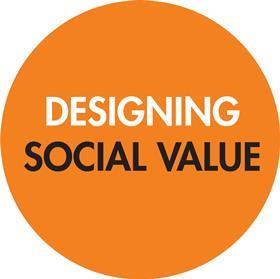Investing in good design from the start reaps long-term social and financial benefits, writes Julia Park

Social value is gaining traction – and not least in the built environment where it is becoming something of a holy grail for architects. It’s not a new concept, and neither is it new to the profession. Throughout history, architects have sought to add social value through their work, and very often succeeded.

It’s inevitably easier when you work for public bodies and philanthropists because social value is part of the lexicon. In the context of housing, the shift to private-sector provision that began in the 1980s has made it more difficult even to talk about. It hasn’t been easy for housing associations either. Being forced to compete with private developers when bidding for land and being expected to fund affordable housing through cross-subsidy has changed those conversations as well. But some have managed to stay close to the social values that their charitable status implies, and there’s a sense that many more are re-evaluating their corporate priorities and returning to a “people before profit” ethos.
Government policy is also shifting. Social value has been formally recognised since 2012 when it gained formal status on the pre-procurement agenda of public-sector clients through the Public Service (Social Value) Act. The original purpose of the act was to help the voluntary sector and social enterprises to access public-sector contracts and widen the definition of “value” beyond the financial; a laudable objective. It applies to all contracts covered by the Contracts Regulations (2015) and requires clients to consider how investment can improve the economic, social and environmental well-being of the relevant area, and how it secures that improvement through its approach to procurement. Anyone bidding for a public contract now has to explain how social value forms part of their offer.
Changes to the Treasury’s Green Book, the basis of government cost-benefit analysis and the appraisal of public investments, means that it also takes account of socio-economic value, as well as purely economic value. This, too, is welcome in principle but to encompass the breadth of what can be classed as social value, the definition is extremely loose. Predictably, the costs and the benefits are expected to be “valued and monetised where possible to provide a common metric”.
A number of built environment professionals are picking up on the opportunities provided by the act and making it relevant to their work. Social Value in the Built Environment: An introductory guide for local authorities and development teams, produced by UKGBC in March last year, is a useful starting point.
Overcrowding, poor living conditions, high housing costs and insecurity all have a social cost – and at some point that translates to a monetary cost. This is money that could be saved through wise initial investment and thoughtful design
Under three broad headings (jobs and economic growth, health and wellbeing in the environment, and strength of community), it gives practical examples of how new development can add social value. Decent jobs for local people, resilient buildings and infrastructure, accessible environments, sustainable transport, good mental and physical health and promoting local ownership of the development and creating a strong local character all feature in the list of examples. Nothing is particularly new, but it all matters more than ever, and the emphasis is on treating every development as a unique opportunity – something that architects generally do.
I hope we don’t succumb to the Treasury’s desire for social value to be monetised. While it’s what the Green Book wants, it would be a pity to go down that route for two reasons: firstly because the whole point of the act is to distinguish between social value and monetary value and secondly because gathering evidence and monetising benefits is a costly exercise in itself. It could easily eat up the savings and tip the balance; making the intervention cost more than it’s worth.
Proving cause and effect is notoriously difficult and we already have good evidence that maintaining an active and healthy lifestyle helps to prevent a number of diseases, thereby reducing hospital and GP visits, and medication. We know that loneliness affects our mental health and that crime is often linked to poverty, lack of opportunity and marginalisation.
Overcrowding, poor living conditions, high housing costs and insecurity all have a social cost and at some point that translates to a monetary cost. This is money that could be saved through wise initial investment and thoughtful design. Let’s trust the care workers, health professionals, teachers, youth workers and police officers who pick up the pieces and consistently warn that prevention is better than cure.
Eradicating scenarios that clearly work against social value is a good place to start but there are so many ways in which we can create more positive value.
Spaces designed with and for people; places where everyone feels they belong and are part of a community – environments that aren’t resource-hungry and that get better over time.
Embracing social value in a meaningful way requires a cultural shift
Embracing social value in a meaningful way requires a cultural shift. Climate change activists have shown how powerful a bottom-up approach can be, and there are some impressive disruptors in our sector too. But when you are trying to change the culture of the private sector – the people responsible for 80% of our new housing – it has to be top-down too. Some developers already get it. Argent, Urban Splash and Urban and Civic spring to mind and there are others who understand social value and the concept of patient capital. But these are still alien concepts to many.
Homes England (the Homes and Communities Agency in its previous incarnation) describes itself as “the government’s housing accelerator”. It provides funding to kick-start stalled sites and create infrastructure and brings public land to the market – very often the private market.
Does it require social value to be demonstrated, or the new homes to be zero carbon? I doubt it. Last time I looked, Building for Life accreditation was the only qualitative requirement. If policymakers are serious about embedding social value, they should start here. Not least because these projects involve public assets and affect all of our futures.
What can architects do? Ours is a profession in which social value is largely ingrained. But as with most things, there is ebb and flow – times when people simply aren’t listening.
But to suggest that people like Colin Ward, Walter Segal, Kate Mackintosh and Ralph Erskine had it easy in the pre-Thatcher era would belittle their achievements. We don’t always get it right and there is always more to learn, but we should trust our instincts and convictions and make social value part of the conversations we have with everyone we work with – beginning with our clients. Every time someone mentions value engineering, bring up social value.
I heard the news of Ted Cullinan’s death as I was writing this article. The moving tribute from the practice he founded brought home the fact that we’ve lost an astounding advocate of social value.
















No comments yet